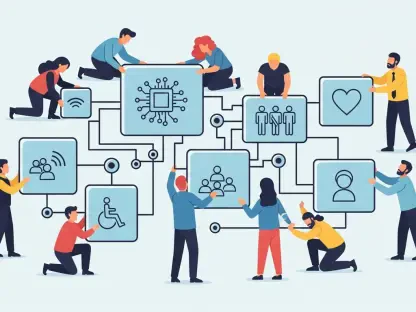The upcoming release of ChatGPT 5, the next significant upgrade to OpenAI’s language model, has sparked considerable interest within the AI community. Slated for 2025, ChatGPT 5 follows a series of substantial advancements observed in its predecessors, such as a better understanding of context, human-like response generation, and assistance with complex tasks. This anticipation stems from the remarkable improvements that previous iterations have delivered and the promise of even greater capabilities embedded in the new version. The primary focus of this announcement revolves around the anticipated enhancements, functionalities, and varied potential applications of ChatGPT 5 across numerous domains.
Anticipated Advancements in ChatGPT 5
Several pivotal advancements are expected from ChatGPT 5, which include superior language understanding, refined reasoning capabilities, expanded multimodal functionality, and minimized errors. The model’s ability to handle language with greater finesse and subtlety signifies a leap forward in reducing misunderstandings and generating responses that are both accurate and contextually appropriate. By honing its grasp on human language intricacies, the model aims to deliver more precise and coherent interactions.
Moreover, ChatGPT 5’s enhanced reasoning capabilities are set to empower it with a heightened ability to manage intricate tasks and complex queries. This improvement positions the model as a more robust solution for users seeking sophisticated AI assistance. A particularly notable feature of ChatGPT 5 is its multimodal functionality, allowing the model to adeptly process and respond to various data types, such as images and audio, beyond text. This means users could engage in interactions that involve describing an image or transcribing audio content seamlessly. Additionally, while no AI is entirely error-free, ChatGPT 5 is expected to exhibit a reduced rate of factual inaccuracies, resulting in more reliable and trustworthy outputs.
Comparison with Other Language Models
In the rapidly evolving landscape of language models, ChatGPT 5 stands out not just for its anticipated advancements but also when compared to other prominent models like Google’s Gemini and Meta’s LLaMA. Google’s Gemini, renowned for its integration with Google services and strong performance on various benchmarks, excels in multimodal functionalities. However, it does not specifically focus on conversational interactions to the same extent as ChatGPT, potentially making it less specialized for dialogue-rich environments.
On the other hand, Meta’s LLaMA is celebrated for its open access and customizability, making it particularly valued within the research and open-source development communities. LLaMA’s flexibility comes with a trade-off, as it generally requires a higher level of technical expertise for effective use and is not as readily accessible for the average user. This contrasts with ChatGPT’s broader aim to cater to a wide range of users by providing a more user-friendly interface and lower entry barriers. These comparisons highlight ChatGPT 5’s balanced approach in integrating advanced functionalities while maintaining accessibility and utility for a diverse user base.
Expectations from the GPT-5 Model
The engine powering ChatGPT 5, known as GPT-5, is poised to introduce several key enhancements that could redefine user interactions with AI. One of the foremost improvements involves enhanced contextual understanding, facilitated by better memory retention and a deeper grasp of context. This advancement ensures that responses during extended interactions remain coherent and closely aligned with the conversational flow, significantly improving user experience.
Moreover, GPT-5 is anticipated to display stronger logical reasoning abilities and improved factual accuracy. These enhancements are geared towards reducing the likelihood of straightforward errors and enhancing the model’s capacity to tackle complex reasoning tasks. Developers, in particular, can look forward to more advanced code generation and understanding capabilities provided by GPT-5. This means the model could become an indispensable tool for developers seeking assistance with coding-related tasks.
The model’s improved multimodal capabilities further underscore its versatility, as GPT-5 aims to process and generate data across varied formats including text, images, audio, and video. This expanded functional range promises new interaction methods, allowing users to engage with AI in ways previously imagined only in theoretical discussions. With refined training data and an enhanced model architecture, GPT-5 is also expected to significantly reduce the occurrence of nonsensical information, commonly referred to as “hallucinations,” thereby bolstering the model’s reliability.
Impact on Users
Current and new users of ChatGPT can anticipate a more powerful and versatile AI assistant with the advent of ChatGPT 5. The anticipated enhancements are expected to translate into more accurate and relevant responses, with users benefiting from the model’s improved language understanding and reasoning capabilities. This means that responses will not only be more precise but also contextually fitting and nuanced, catering to both straightforward and complex inquiries.
Moreover, the model’s ability to handle more sophisticated and multifaceted tasks promises to be a significant boon for users across different domains. Whether it involves managing detailed queries or executing complex instructions, ChatGPT 5 is geared towards offering comprehensive assistance. The model’s expanded multimodal capabilities introduce new dimensions of interaction, such as the capacity to describe pictures in detail, transcribe audio content, and engage with diverse data formats seamlessly.
With fewer mistakes and a reduced incidence of hallucinations, users can expect a more reliable and trustworthy experience. This increased accuracy and dependability are particularly crucial for applications in critical sectors like healthcare, legal advisory, and education, where precision and reliability are paramount. Overall, these advancements signal a substantial enhancement in how users can leverage AI assistance in their daily lives and professional endeavors.
Ongoing Evolution of Large Language Models
The advancements observed in GPT-5 are indicative of a broader trend in the continuous evolution of large language models. One of the key research and development areas focuses on explainable AI, which aims to enhance transparency by making AI models’ decision-making processes clearer and more understandable to users. This push towards transparency is essential in building trust and ensuring that AI outputs are not only accurate but also comprehensible.
Additionally, efforts to mitigate biases in training data are crucial for ensuring fairness and impartiality in AI outputs. By reducing biases, developers can create models that provide more equitable results, which is particularly important in applications involving sensitive or critical decisions. Increasing the efficiency of large models is another significant goal, as it addresses the need to reduce computational requirements and make AI technologies more accessible. These efforts collectively aim to create more sophisticated, capable, and responsible AI technologies.
These ongoing advancements underscore the dynamic nature of AI research and the relentless pursuit of refining and enhancing the capabilities of large language models. As these technologies continue to evolve, they promise to deliver ever more impressive and transformative applications across various domains, driving innovation and progress.
Potential Applications and Benefits
ChatGPT 5 is expected to find applications across a multitude of industries, offering versatile solutions that address specific needs and challenges. In the realm of customer service, AI-powered chatbots can provide immediate support, answering queries and resolving issues with efficiency and accuracy. This capability not only enhances customer satisfaction but also streamlines service processes, reducing the workload on human agents.
In content creation, writers and marketers can leverage ChatGPT 5 to generate articles, marketing materials, and other forms of content, thereby streamlining the creative process. The model’s ability to produce coherent and relevant text can significantly boost productivity and allow content creators to focus on higher-level strategic tasks.
The education sector stands to benefit substantially from ChatGPT 5, as the AI can offer personalized tutoring and support to students. By providing tailored assistance and resources, ChatGPT 5 can enhance learning experiences and help students grasp complex concepts more effectively. Programmers, too, can gain from the model’s enhanced code generation, understanding, and debugging assistance, making it a valuable tool in the software development lifecycle.
Multimodal AI: The Future of Interaction
One of the most exciting prospects of ChatGPT 5 lies in its multimodal capabilities, which signify a new era of interaction possibilities. Multimodal AI allows models to process and generate various data types, including text, images, audio, and video, opening up a spectrum of innovative applications. For instance, the ability to describe pictures in detail and interpret visual content accurately can revolutionize fields such as digital art, forensic investigation, and media analysis.
Moreover, users can generate realistic images from text descriptions, bridging the gap between imagination and visualization. This functionality can be particularly beneficial in creative industries, enabling designers and developers to bring their ideas to life effortlessly. Real-time spoken language translation facilitated by multimodal AI can also transform global communication, making it seamless and immediate across different languages.
Additionally, the potential to create music based on user-defined guidelines highlights the model’s versatility in artistic domains. The ability to compose music following specific instructions can inspire new creative processes and democratize music production, making it accessible to a broader audience. These capabilities collectively represent a leap forward in how humans interact with and harness the power of AI.
Additional AI Advancements
The AI community is abuzz with excitement over the forthcoming release of ChatGPT 5, OpenAI’s next major upgrade to their language model. Scheduled for launch in 2025, ChatGPT 5 arrives following a series of remarkable advancements seen in its predecessors. These earlier versions showcased significant improvements in understanding context, generating human-like responses, and aiding with complex tasks, setting a high bar for the new iteration.
The anticipation for ChatGPT 5 is fueled by the substantial progress made by its predecessors and the promise of further innovations. Expectations for the new version include enhanced comprehension and even more precise and natural-sounding conversational abilities. Moreover, it is anticipated to offer assistance in a broader range of complex tasks, potentially revolutionizing interactions across various fields such as customer service, content creation, and educational tools.
This announcement about ChatGPT 5 not only highlights the expected improvements but also underscores the model’s expansive potential applications. The AI community is particularly eager about the new functionalities that might emerge, which could further streamline processes and enhance productivity in numerous domains, from business to entertainment. OpenAI continues to push the boundaries of artificial intelligence, and ChatGPT 5 is set to be a significant leap forward in this ongoing evolution.









